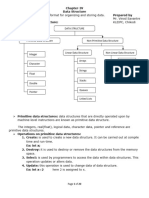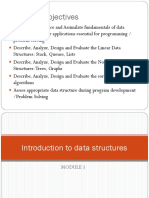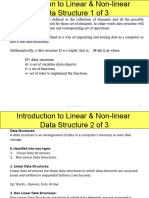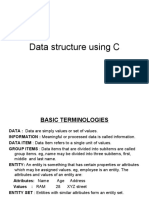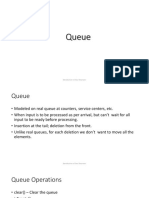0% found this document useful (0 votes)
5 views30 pagesChapter 5 - Abstract Data Structures
The document provides an overview of data structures, including linear and non-linear types, and their operations such as traversing, searching, inserting, deleting, sorting, and merging. It also discusses control structures, algorithms for sorting (Bubble Sort), searching (Linear and Binary Search), and data representation methods like linked lists and trees. Additionally, it explains the concepts of stacks and queues, detailing their operations and characteristics.
Uploaded by
Sridhar RamalingamCopyright
© © All Rights Reserved
We take content rights seriously. If you suspect this is your content, claim it here.
Available Formats
Download as PDF, TXT or read online on Scribd
0% found this document useful (0 votes)
5 views30 pagesChapter 5 - Abstract Data Structures
The document provides an overview of data structures, including linear and non-linear types, and their operations such as traversing, searching, inserting, deleting, sorting, and merging. It also discusses control structures, algorithms for sorting (Bubble Sort), searching (Linear and Binary Search), and data representation methods like linked lists and trees. Additionally, it explains the concepts of stacks and queues, detailing their operations and characteristics.
Uploaded by
Sridhar RamalingamCopyright
© © All Rights Reserved
We take content rights seriously. If you suspect this is your content, claim it here.
Available Formats
Download as PDF, TXT or read online on Scribd
/ 30





